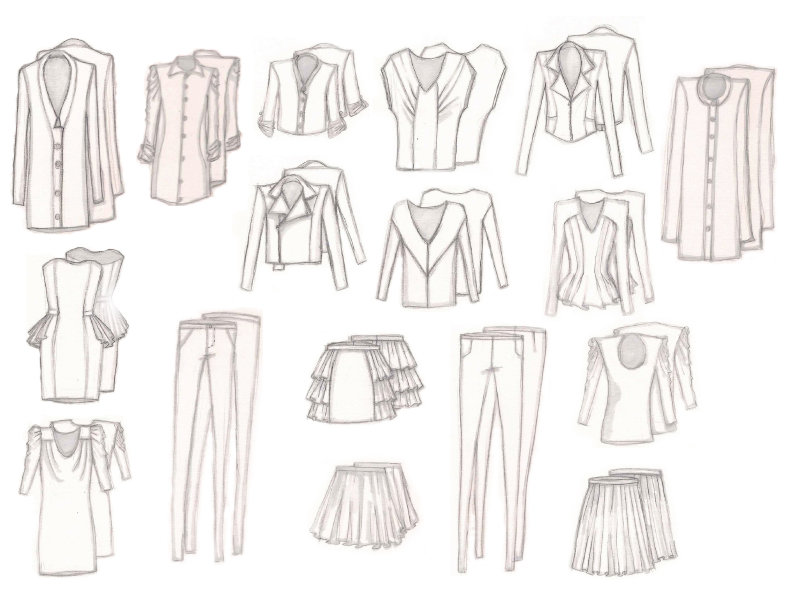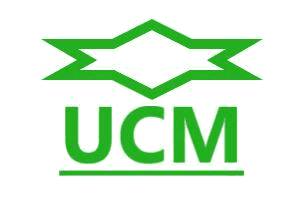Clothing and Mass Customization
Figure 1:Technology has a tremendous impact on many areas in theapparel industry. In the last thirty years, digital technology advancements inthe Internet and e-commerce, along with businessand production process automation, opened opportunities for gaining insight into consumer behaviour and preferences. These advances coupled with the digitization of manufacturing, and flexible production processes, made product mass customization possible. The following gives an overview of MC, a brief history of apparel MC, and provides examples of co-designing clothing online.Advances in digital technology in the last thirty years have had a profound impact on business and production strategies, in many major industries. Among such impacts is the implementation of product MC that brought customization and personalization to mainstream markets. The MC concept is defined by Pine as “the mass production of individually customized goods and services.” MC is a pull strategy where consumers initiate product orders, versus push strategy where orders are initiated by management. This strategy engages consumers in the co-designing process by allowing them to participate in selecting the end product specifications at various stages of its production. Consumers thereby specify their owntailor-made products to suit their needs and wants. MC brings tailored productsto niche markets that benefit from economies of scale.Lampel & Mintzberg,have identified five customization strategies that a product- manufacturing firm can introduce toits value chain at any, or all of its four stages: design, fabrication,assembly and distribution, as illustrated in figure 2 below (Lampel & Mintzberg). These strategies form a continuum from pure standardization to pure customization. In the middle are three strategies: segmented standardization,customized standardization and tailored customization, which are applied in MC to maximize mass production efficiency while allowing for consumer customization. Figure 2: ProductCustomization Strategies Chris Anderson put forward a concept that shows the potential for MC to achieve economies of scale. As the MC concept isbased on a made to order process, its production / final assembly happens after the customer orders it. This concept requires low production (no inventory of finished products), low distribution (delivered after its production/assembly), and no bricks and mortar (online display). Anderson introduced the concept of “long tail” effect to illustrate the potentialfor a new economy based on MC products, and argued that it could rival thecurrent economy of mass-production. In figure 3, Anderson portrays the mass production as the “head”, while the “long tail” refers to economies of scale that are achieved through the sale of customized products globally to niche markets. E- commerce made it possible for mass customized products to reach its target consumers no matter where they are located. Figure 3: Chris Anderson’sLong Tail Graph A study by Senanayake &Little identified the consumer involvement in the MC process introduced earlier by Lampel &Mintzberg as the “consumer order decoupling point” per customization stage The un-shaded area shows three MC levels: “Segmented standardization”, “customized standardization”, and “tailored customization”. The triangle in this figurere presents the customers’ involvement point in the customization process, andit is the point where they collaborate in the “co-design”. Figure 4: Pointsand extent of customization The MC designand business concept was first implemented by the automotive, computer and entertainment industries to garner and maintain consumer brand loyalty. This was achieved by engaging consumers in making limited design decisions that defined the final product,which in turn led to higher consumer satisfaction. As with automobiles and computers, apparel customizationand personalization have become available to the average consumer since the 1990s. Levis and Nike, considered apparel market leaders, pioneered various aspects of apparel MC in retail spaces. Ten years later, digital technology advancement of the Internet and e-commerce made it feasible for Nike, Adidas and Lands End to pioneer apparel MC online. An example of this would be for a consumer to customize and purchase a tailored Nike shoe online.There are two broad types of apparel customization:occupational and customization for individual consumers. Occupational apparel customization has long been used to brand uniforms within particular professions. Apparel customization for individual consumers is applied to fit,and/or design. Prior to MC, the consumer and traditional tailor would meet in person to start the apparel customization process that included one of two customization strategies, bespoke andmade-to-measure). Bespoke customization fits into the“pure customization” strategy and cannot be considered MC, as its process starts from scratch with a unique design, size, material, and colour, specific to suit aparticular customer. By contrast, made-to-measure customization process includes the same stages of the bespoke process, but uses an existing design that is then tailored to fit the client’s body and personal taste, and as such adheres to the “tailored customization” MC strategy. The difference between the bespoke and made-to-measure is the point at which the consumer isinvolved in the product design and fabrication process (Figure 4). When technology was first used to communicate and make thegarment, it was referred to as “demi-bespoke”, but was latermodified to “semi bespoke”. In describing this new hybrid between bespoke and made-to-measure garments Ross writes:The term“semi-bespoke” is now used in parallel with “made-to-measure” and is loosely defined as having handcrafted components in the tailoring process but with theuse of some, or all, 3D technology for measurements, design, pattern-cutting,and manufacture. The key difference identified in this study between“made-to-measure” and “semi- bespoke” is the emphasis on technology being faster and more economical but enabling a better fit, design, and manufacture .The term “semi bespoke” applies to men’s luxury wear, and theparallel term for this in women’s luxury wear is referred to as “demi couture”. Both these processes fit into the MC strategy of tailored customization.According to Fiore et al.apparel MC can deliveradded consumer value. It does so by engaging consumers at a deeper level, as itallows them to specify various details of their clothing using a co-designtool. This has the potential of engaging them in an enticing and memorable experience. The following examples describe two different levels of apparel MC offered online. The first is “semi bespoke” concept thatoffers its potential consumers the possibility of making decisions at the prefabrication stage. An example of this is itailor.com,which provides an apparel design tool kit allowing its users to easily co-design men’s clothing online. Theirco-design process starts with its users selecting a desired piece of clothing,such as business suit, from a series of silhouette options. They then proceed with selecting design options for collar, pockets and cuffs etc., and continue with making design decisions about the desired fabric material and colour; they can also add other personal touches to further personalize it, such as theirmonogram. allows its potential consumers to see the visual impact oftheir co-design choices simulated in a 3D image, and thereby engages more oftheir senses in a creative exercise, allowing them to visualize their design choices in real time. Figure 5 below shows 4 screen shots illustrating co-designing of a business suit online. Figure 5: Customizing a Suit Online The second example involves digital printing, which demonstrates a lower level of apparel customization that engages potential consumers at the post fabrication stage. This is referred to as “customized standardization” MC strategy (Lampel and Mintzberg, 1996; Senanayake&Little, 2010). An example of this is Zazzle.com,a website that provides its users with an apparel design tool kit, allowing them to select t-shirt style and colour, and to customize and visualize desired text/image to be printed on the selected t-shirt. Figure 6 below illustrates two screen shots of this process. Figure 6:Customizing Online Consumer studies in various countries such as the US, Saudi Arabia ,Europe, Australia ,South America,The Middle East ,Africa,southeast Asia,show that the interest in apparel MC online is global. More recently, a studyin retail trends in the US predicted an increase in product customization and personalization, including clothing. Recently, The customization 500 published are view of small, medium and large MC companies that categorized online apparel MC under digital printing and made-to-measure. The majority of these companies offer custom digital printing for t-shirts, and a smaller number of companies offer made-to-measure clothing that primarily target men’s business attire,while a much smaller number offer custom shoes.This review shows that apparel MC has been taken up in the market place on a relatively small scale, and that the MC of digital printing process is more prevalent online than made-to-measure. Also, Germany and US lead in the implementation of the apparel MC concept on a global scale. |

